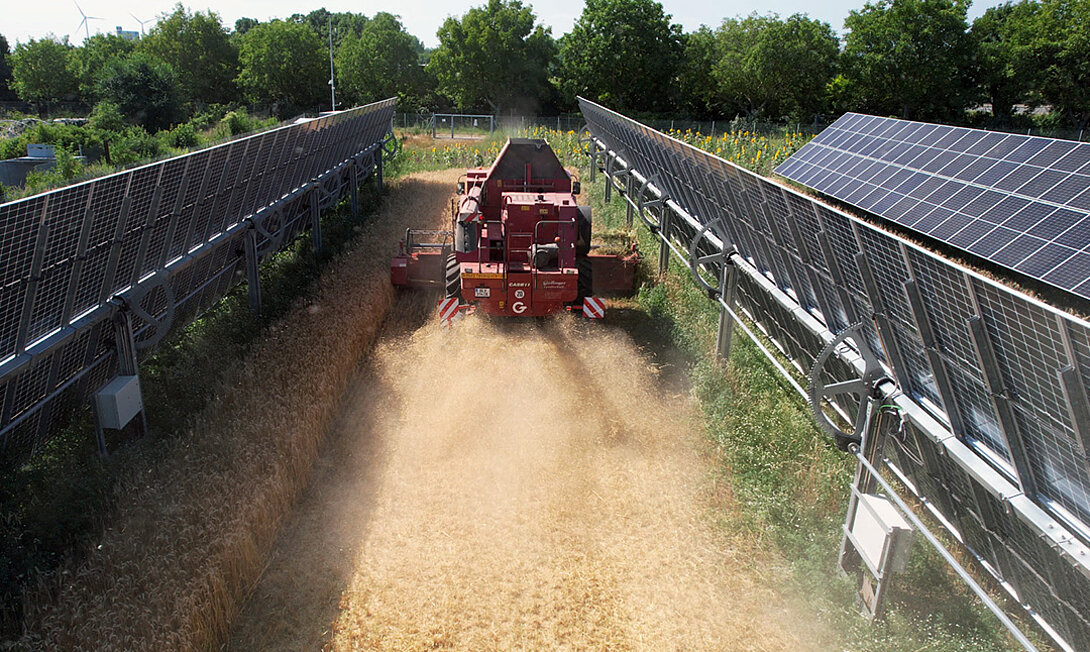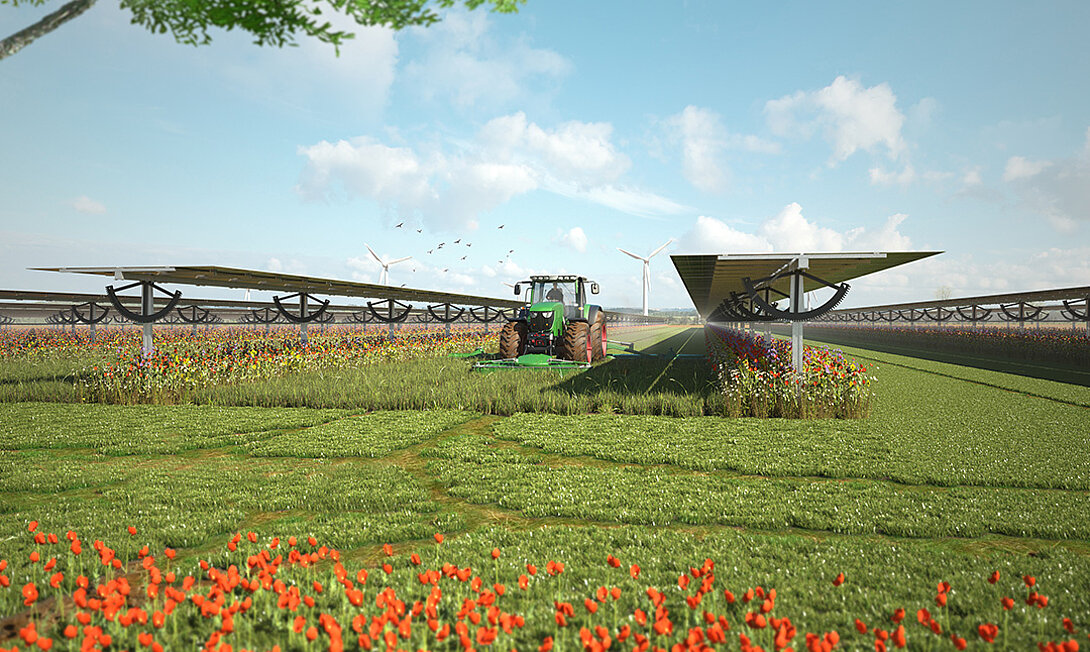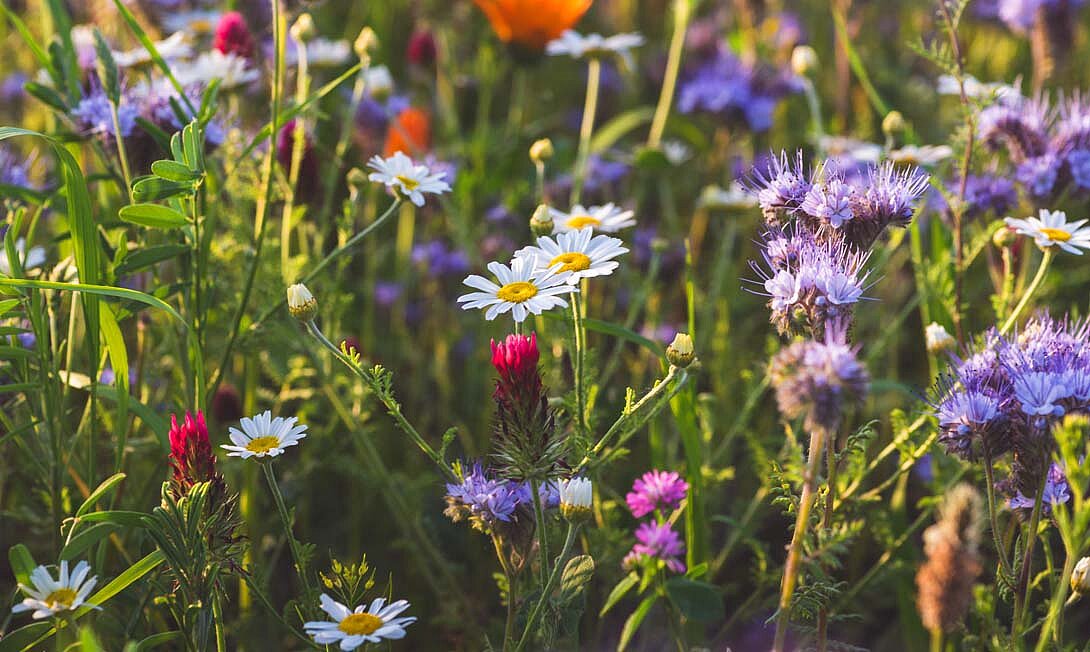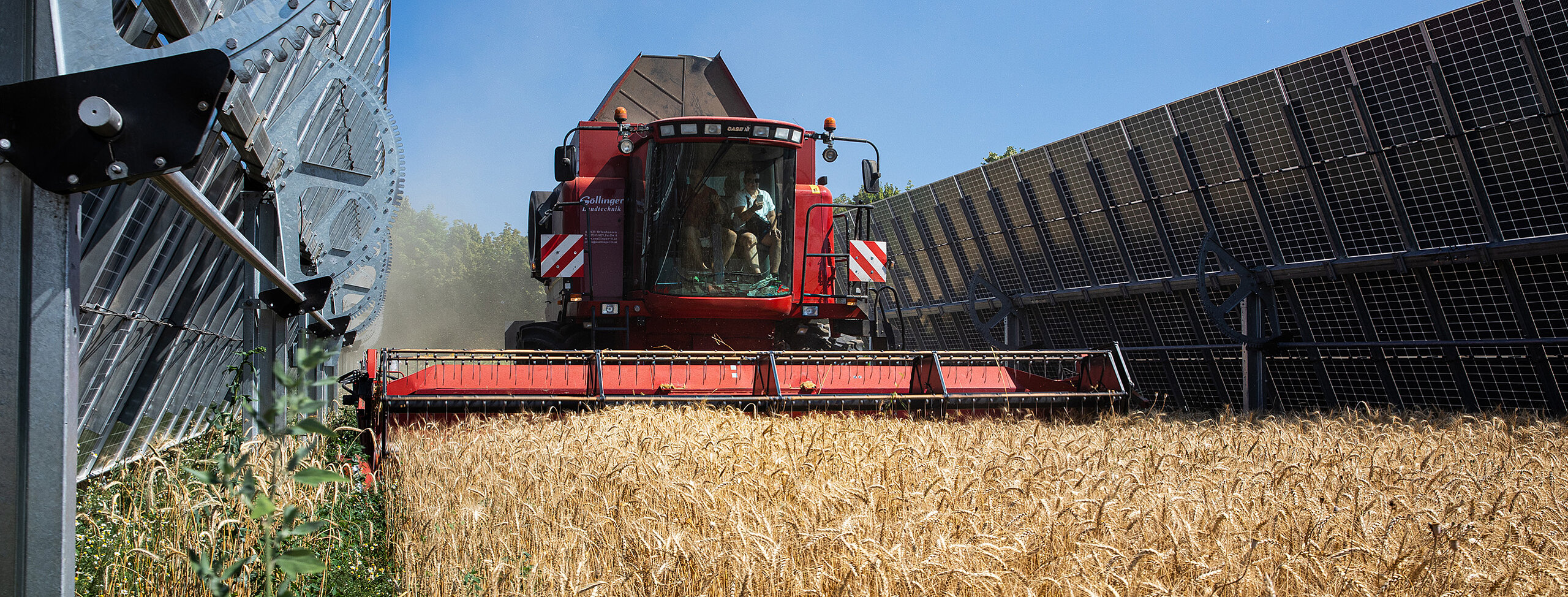Hauptinhalt
Management
No additional land is required because agricultural land can be used for this form of solar power generation. Local authorities, energy communities, and power farmers double their revenue from existing and actively cultivated farmland and grasslands. This makes you a trailblazer on the way to a climate-neutral future - and with economic benefits to boot!
Adjustable module tables and long cultivation lines
The system allows you to adjust the module tables so that the space between the rows can be used for farming. Via a smartphone app, farmers can set the modules to "cultivation mode". In this mode, damage to the modules, such as from stone chipping, can be largely prevented. The main feature of this concept is the spacing between the module table rows to provide sufficient space for agricultural machines. These distances can be adapted to the needs of farming during the planning phase.

Farming
There are crops that actually grow better in partial shading, especially in very hot years. How crop yields develop very much depends on the location as well as on soil and local weather conditions. Long-term empirical data and scientific studies are not yet available.
Evidence from current agricultural PV test plants indicate that crops such as potatoes, legumes (such as soya), lettuce, spinach, field beans, onions, string beans, cucumbers, zucchini, cereals (Ro, G, Bu, Ha), rapeseed, peas, asparagus, carrots and radishes are suitable for agricultural photovoltaics.

Grassland cultivation
Fresh grass, clover and hay from the Sonnenfeld are not a problem. The row spacing of the module is adapted to the agricultural vehicle fleet. Via a smartphone app, farmers can set the modules rows to "cultivation mode" and that's it. And electricity is harvested almost incidentally!

Flowering strips/bee pasture
Flower strips or bee pastures are arranged underneath the module rows and around the module anchorages. This creates added ecological value by increasing biodiversity, as these areas provide habitats for insects and other beneficial animals, which in turn helps with pollination and reduces pest infestations.
The advantages at a glance
- There is no competition for land with food production (agricultural use: 80%, flower strips: 18%, system components: 2%)
- Soil is more moist due to partial shading and wind protection
- Additional revenue from double utilisation
- Crisis-proof even during climate-induced crop loss
- Simultaneous regional production of electricity and food
- Higher social acceptance due to minimal loss of acreage (2%)
- Diversification of revenues from electricity sales or lease income
Am I ready for hectares of solar power?
Request your free land check now!
An area of at least 5 hectares in size should not be a problem. Will it be suitable for agricultural photovoltaics?
I hope so and will do the "area check"!
